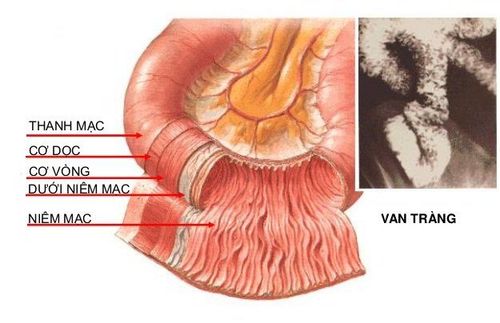This is an automatically translated article.
The article was written by Doctor Trinh Ngoc Duy - Emergency Department - Vinmec Times City International Hospital.Celiac is a chronic autoimmune disease caused by a reaction to gluten in food. The disease has a genetic factor and in clinical practice, manifestations are quite diverse from no symptoms to faint symptoms or severe cases can have typical malabsorption symptoms such as chronic diarrhea, anemia, etc. iron deficiency blood, thin weight loss...
1. The Purpose of the Gluten Free Diet
A gluten-free diet is necessary for the management of the signs and symptoms of some of the following conditions:
Celiac disease - gluten intolerance: A condition in which gluten triggers the immune system to function mucosal lesions of the small intestine. Over time, this damaging process prevents the absorption of nutrients from food. Celiac disease is an autoimmune disorder. Non-celiac gluten sensitivity is caused by signs and symptoms associated with celiac disease including abdominal pain, bloating, diarrhea, constipation, "brain fog," rash, or headache. However, no lesions were found in the tissues of the small intestine. Studies show that the immune system plays a definite, but poorly understood, role in this process. Gluten ataxia, an autoimmune disorder that affects certain nerve tissues and causes problems with muscle control and self-movement. A wheat allergy is like any other food allergy, where the immune system mistakes gluten or some other protein in wheat as a trigger for an illness, such as a virus or bacteria. The immune system produces an antibody to a protein that promotes an immune system response that can lead to congestion, shortness of breath, and other symptoms. The health-proclaimed gluten-free diet is the impetus to avoid wheat and other grains with gluten. However, very few clinical studies have investigated the benefits of this diet in people with no evidence of disease with gluten.
2. Follow-up after treatment
Long-term follow-up is recommended in Celiac patients with the aim of controlling symptoms, improving quality of life, and reducing the incidence of complications. For children, the diet guidance, response monitoring will help ensure growth for children. In the recommendations of the American Gastroenterology Association, the period of periodic follow-up for patients with Celiac is guided to be annually.
The proportion of this group of patients according to studies ranges from 7-30% of patients who have been adjusted to the diet. Common causes include a diet that still contains a certain amount of gluten, intolerance to some other foods (lactose, fructose...), There is an overgrowth of bacteria in the small intestine, microscopic colitis body , pancreatic enzyme deficiency , irritable bowel syndrome . Therefore, when a patient fails to respond to treatment, it is important to re-evaluate the diagnosis and look for possible causes or risk factors. Resistant celiac is defined as persistent or recurrent symptoms with malabsorption and atrophy of the small intestine mucosa despite the use of a gluten-free diet for more than 12 months and the absence of other comorbidities. comorbidities (eg, lymphoma). The rate of treatment-resistant Celiac is low, only 1-2% of patients with this disease and is divided into 2 types based on the infiltration of lymphocytes into the small intestinal mucosa (Figure 18).
In terms of general treatment, there is no difference between the two types, but in terms of salary, the symptoms of type II are more severe and the response to treatment is poor, so patients with typell need to pay attention to nutritional evaluation and treatment. support parenteral nutrition if needed. A number of treatment modalities are being studied including intravenous corticosteroids, budesonide enteric-coated oral tablet, azathioprine, methotrexate, cyclosporine, anti-TNF... however efficacy has not been demonstrated. therefore not recommended for use.
Vinmec International General Hospital is a prestigious address trusted by many patients in performing diagnostic techniques and treating chronic inflammatory bowel diseases... Along with that, at Vinmec Hospital, the practice Currently diagnosed through gastrointestinal endoscopy with Olympus CV 190 endoscope, with NBI function (Narrow Banding Imaging - endoscope with narrow light frequency band) results in clearer mucosal pathological analysis images than with conventional endoscopy, detecting ulcerative lesions in the gastrointestinal tract. Vinmec Hospital with modern facilities and equipment and a team of experienced experts who are always dedicated in medical examination and treatment, customers can be assured of gastrointestinal endoscopy service at General Hospital. Vinmec International Faculty.
Please dial HOTLINE for more information or register for an appointment HERE. Download MyVinmec app to make appointments faster and to manage your bookings easily.
References
Dao Van Long, Dao Viet Hang. Autoimmune diseases of the gastrointestinal tract. Medical Publisher. Fasano A. and Catassi C. (2001). Current approaches to diagnosis and treatment of celiac disease: an evolving spectrum. Gastroenterology, 120(3),636-651. 3. Gujral N., Freeman H. J., and Thomson A. B. R. (2012). Celiac disease: prevalence, diagnosis, pathogenesis and treatment. World J Gastroenterol, 18(42),6036-6059.














